When you work with iMovie, you have the opportunity to give your videos a whole new dimension. Properly editing and combining audio and video clips can not only enhance the overall impression of your projects but also effectively support the mood and message. In this guide, I will show you step by step how to make the best use of your audio and video elements in iMovie.
Key Takeaways
- Use the available audio options in iMovie to make your videos more lively.
- Be mindful of copyright and only use music and effects if you have the appropriate rights.
- Experiment with sound effects and ensure that the volume and overlays suit your project.
Step-by-Step Instructions
Using Audio Options in iMovie
Start iMovie and select the appropriate project folder. When you click on the menu on the left side, you will see different audio options. "Music" and "Sound Effects" are two important aspects available to you. Note that depending on your setup, different music or sound effects may be displayed here.
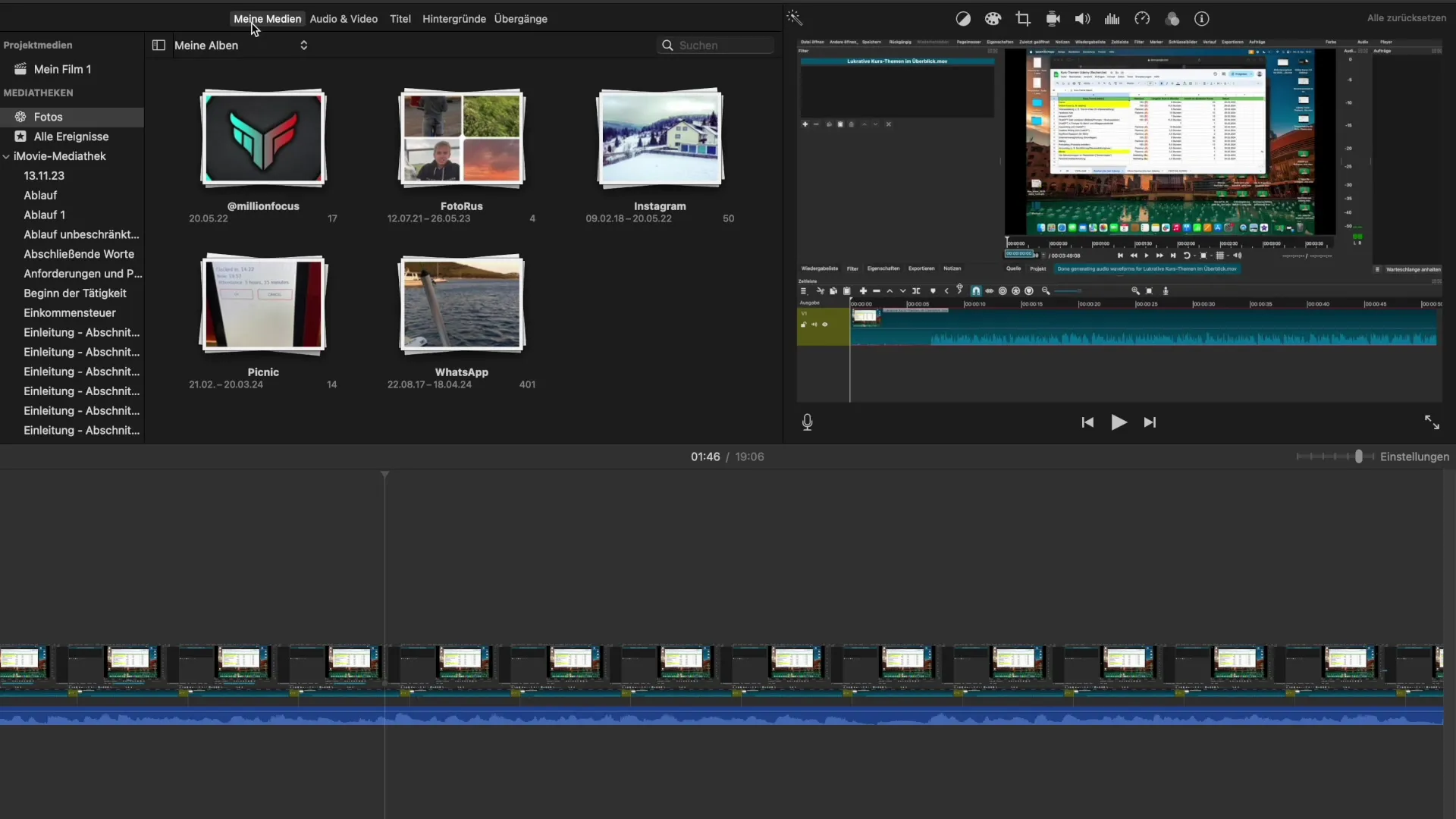
If you have Apple Music in your library or use Apple TV, you can easily access these media files by selecting the corresponding menu items. Even if you don't have any tracks in your iTunes library, you can still upload your own audio files.
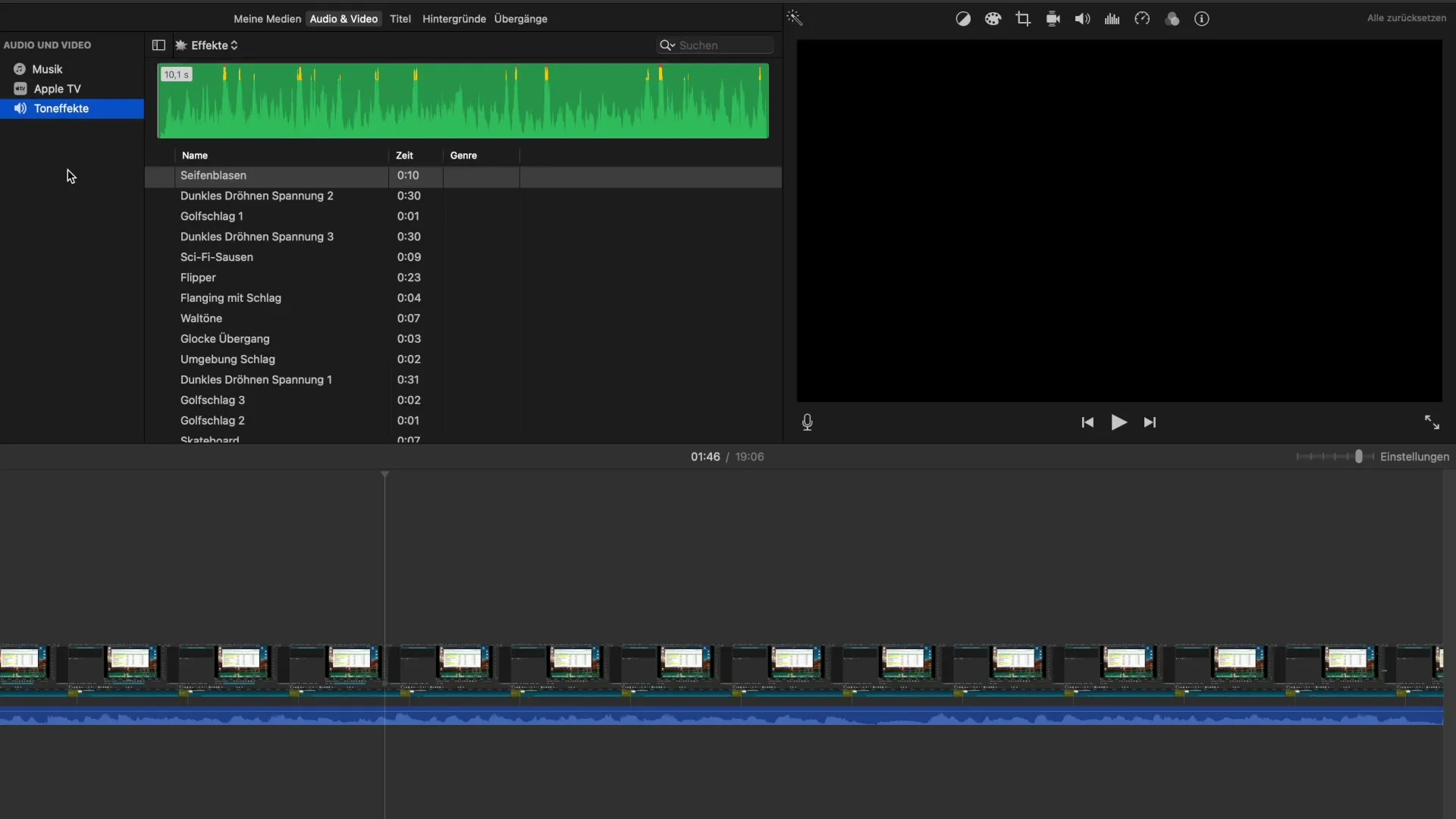
Inserting and Editing Audio
When you have integrated audio files into your project, you need to ensure that copyright is respected. This means that you may only use musical pieces if you have the appropriate licenses. Consider in what context you want to publish your videos, whether privately or commercially.
Before you start editing, clarify: Is the piece intended for commercial use or is it for private use? Ensure that everything remains within legal bounds to avoid problems.
Adding Sound Effects
Another great feature of iMovie is the sound effects. You can find these in the same menu where you access music. Use them to give your videos a special touch. Note that some of these effects may have been provided only for private use, so proceed with caution here as well.
To insert a sound effect into your video, you can simply select it with your mouse and drag-and-drop it to the desired spot in the video. Pay attention to how the effect integrates into your video and whether it conveys the right mood.
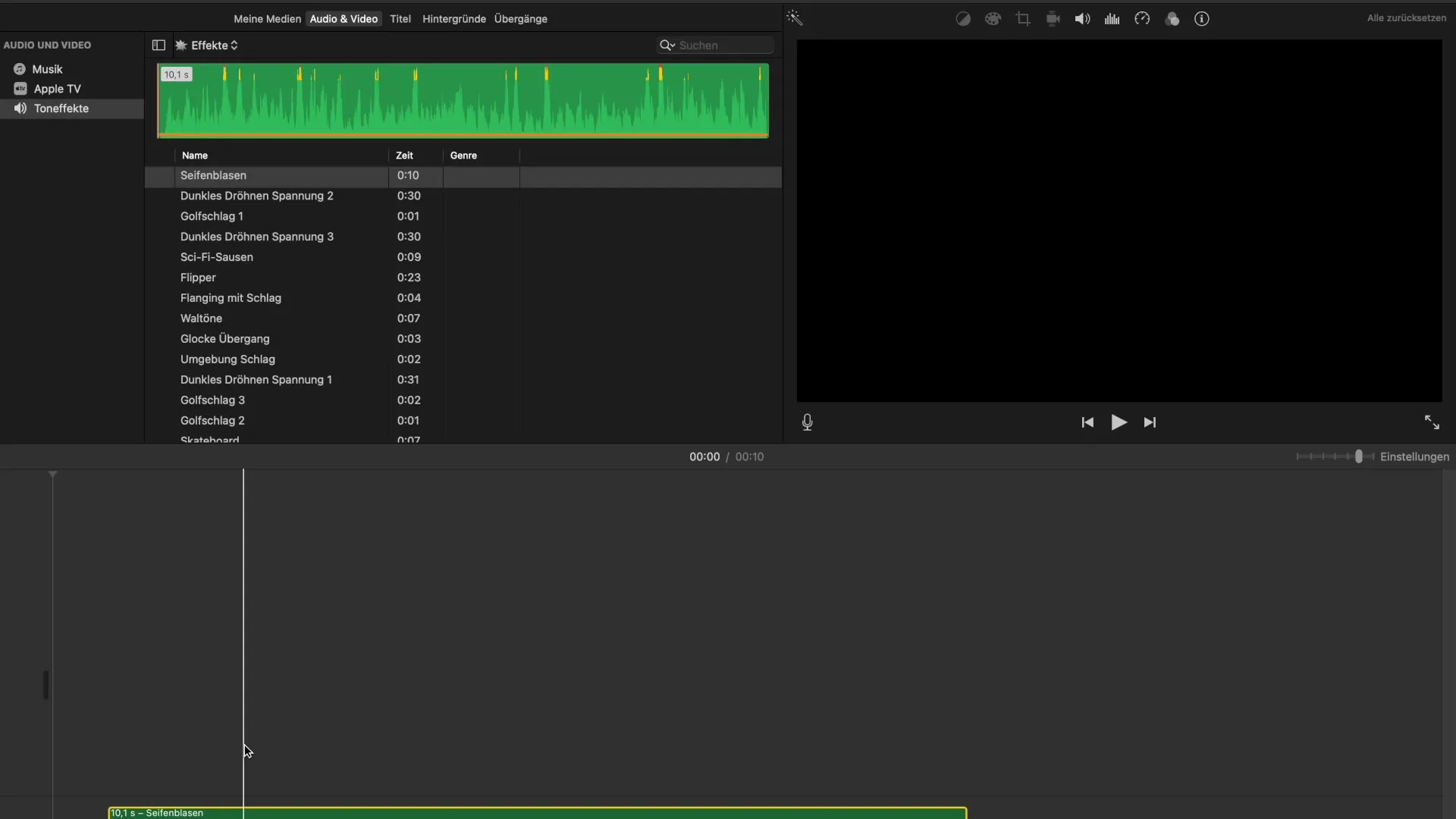
Adjusting Audio Levels
After you have added audio and sound effects, it's important to adjust the volume levels of the individual tracks. You can use the volume controls to ensure that no audio elements are peaking or too quiet. To fine-tune everything, it can be helpful to zoom in closely.
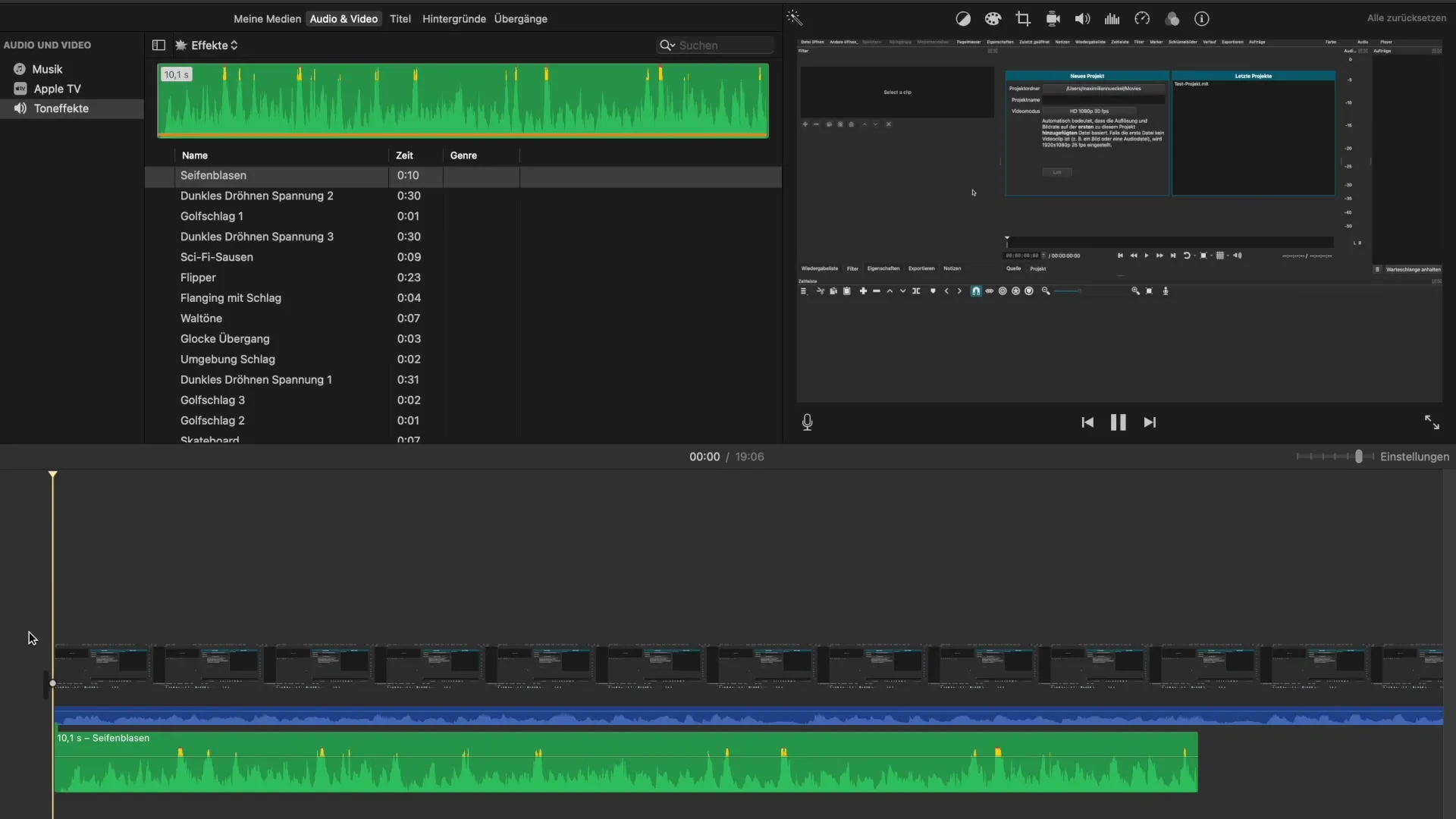
Experiment with different volume combinations. You can make any effect louder or quieter to find the right sound for your videos. Remember: A well-tuned sound can greatly influence the emotions of your video.
Conclusion on the Creative Use of Audio
iMovie gives you the freedom to be creative. Whether you want to use music, sound effects, or other audio content, you should make the most of the variety of options available to you. Consider what your video needs and find the appropriate audio elements that support the visual message.
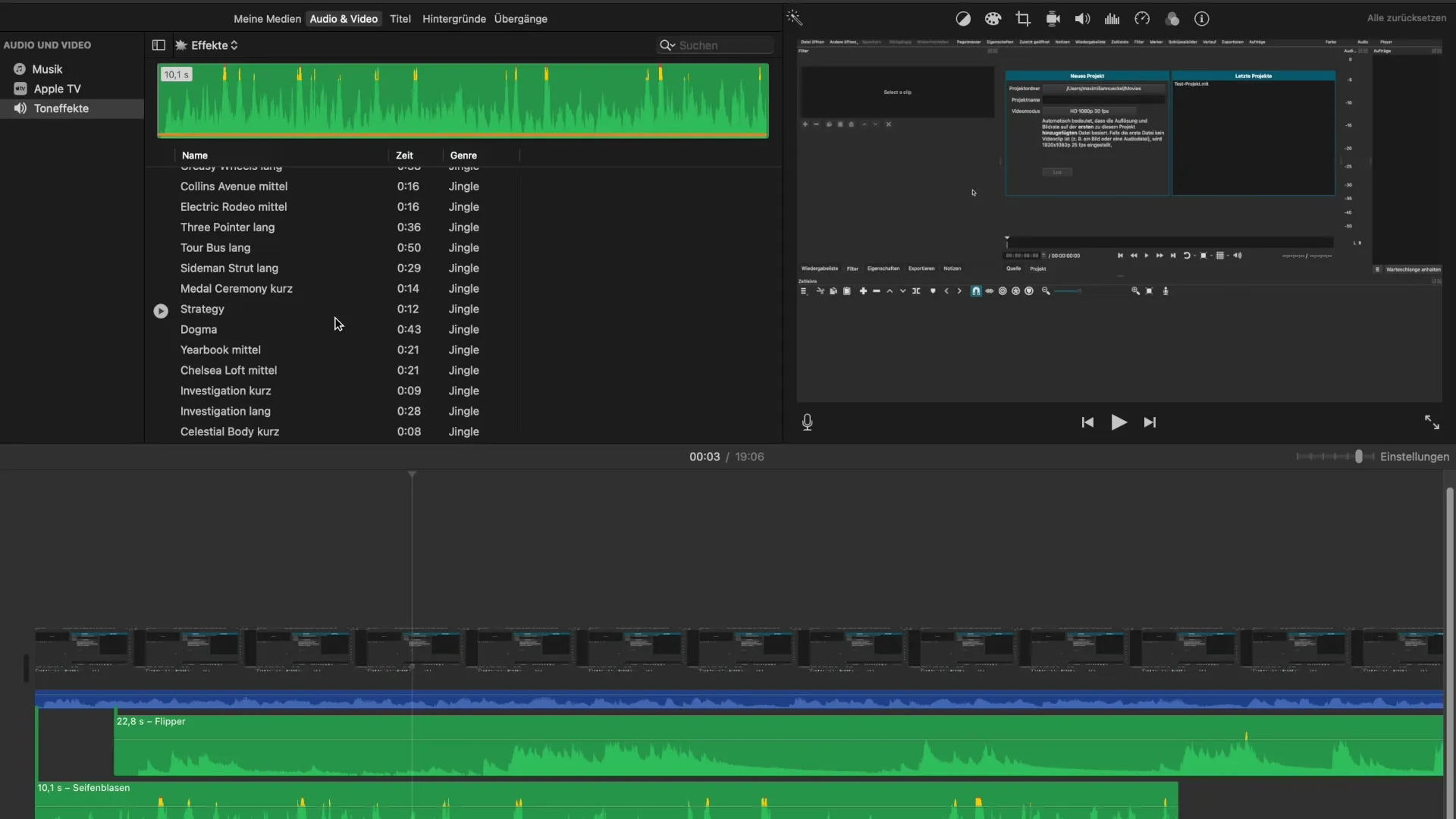
Summary – Comprehensive Explanation of Audio and Video Editing in iMovie
In this guide, you learned how to effectively edit and combine audio and video clips in iMovie. You became familiar with the basic options for music and sound effects and learned how important copyright is.
Frequently Asked Questions
How can I add my own music to iMovie?You can add your own music by dragging the file into your iMovie project.
Are sound effects in iMovie free?The sound effects in iMovie are usually free, but check the licensing terms for commercial use.
How do I adjust the volume of audio in iMovie?You can adjust the volume by using the volume slider for the respective audio track.
Can I use multiple audio tracks in iMovie?Yes, you can overlay multiple audio tracks and adjust the volume of each track individually.


